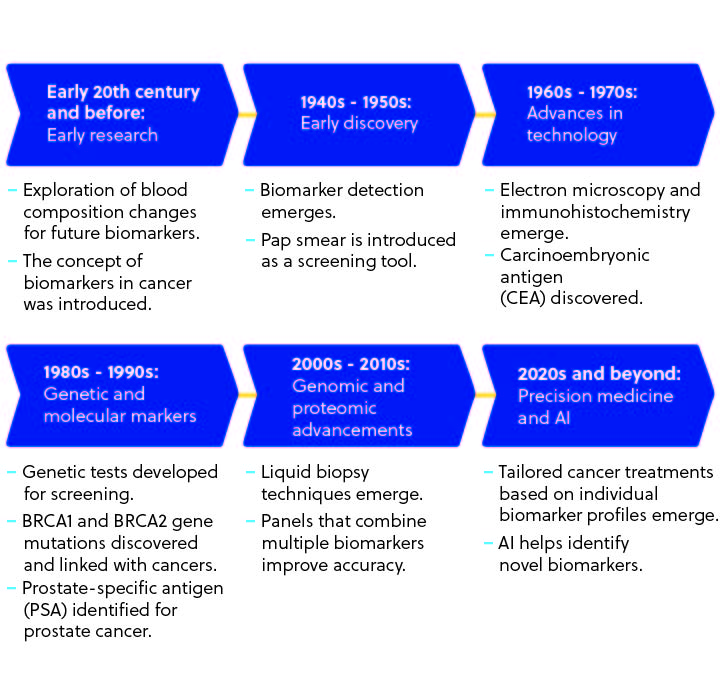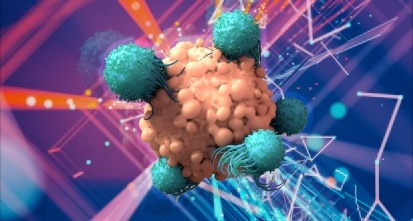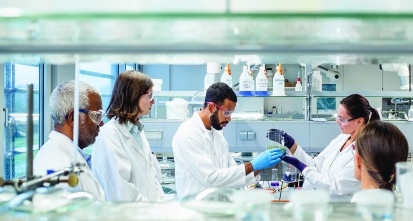Gain new perspectives for faster progress directly to your inbox.

Cancer is a leading cause of death globally, and the International Agency for Research on Cancer estimates that cases will rise to over 28 million in 2040, a 47% increase from 2020. Part of this increase is due to greater life expectancy since age is the most significant risk factor for cancer. However, a troubling rise in cancer diagnoses for patients under 50 suggests that environmental and lifestyle factors also play an important role.
As the scientific community grapples with improving cancer treatment, the importance of early detection and diagnosis has emerged as a key component of effective cancer care. Early detection is associated with better treatment outcomes for surgery, radiation, and targeted therapies, as well as higher survival rates. Researchers are, therefore, actively pursuing breakthroughs in biomarkers, the biological molecules that can indicate the presence or certain characteristics of cancer cells.
Biomarkers include various biological molecule types and structures, such as proteins, DNA and RNAs, metabolites, exosomes, and more. By identifying these biological warning signs, we can diagnose cancers earlier, thereby improving treatment outcomes and patients’ quality of life.
Through our latest research of the CAS Content CollectionTM and the Excelra Biomarker Insights database, we’ve identified research trends and promising areas of biomarkers research, including pancreatic and liver cancers, two of the most difficult-to-treat cancers with poor outcomes for most patients.
This research reveals how far biomarker discoveries have come and how much vital work remains:
The current role of biomarkers in cancer diagnosis
The timeline for the discovery and development of biomarkers for early cancer detection reveals a complex and ongoing process (see Figure 1). Cell-free DNA, which can show mutations or other chromosomal abnormalities indicative of cancer, was first observed in 1948. In the following decades, researchers located “cancer antigens” that also indicate the presence of cancerous cells, and many of these are still commonly tested for today. Examples include carcinoembryonic antigen (CEA), alpha-fetoprotein (AFP), and carbohydrate antigen 19-9 (CA 19-9).

As genetic science advanced, so too did our understanding of biomarkers. Genetic mutations such as BRCA1 and BRCA2 are regularly tested to understand hereditary breast and ovarian cancer risks. Scientists continued identifying proteins that can signal cancer and thus aid in diagnosis, like a prostate-specific antigen that was found in the 1990s. Imaging technology has also improved our ability to find biomarkers, and we currently use MRIs, ultrasounds, positron emission tomography (PET) scans, and computed tomography (CT) scans as critical tools for early cancer detection.
Not only have we discovered more biomarkers, but we’ve also developed a better understanding of what they mean. Some biomarkers aid in diagnosing whether cancer is present or not, while others help predict the course of the disease or its potential response to different drugs and therapies. Applications go even further than these, and today, we evaluate biomarkers in all of the following categories:
- Diagnostic: Detect and identify the presence of cancer.
- Prognostic: Predict the probable course of disease and rate of recurrence.
- Predictive: Forecast the response to a particular drug or treatment.
- Response: Demonstrate a positive or negative response to an agent.
- Monitoring: Assess the status of a disease.
- Susceptibility/Risk: Indicate the potential for developing a disease.
- Safety: Measure the effects of exposure to a potentially harmful agent.
Biomarkers for pancreatic and liver cancer detection
In the last 20 years, publications related to biomarkers for early cancer detection have grown (see Figure 2). The medical community has agreed that successful cancer treatment is only achievable at early, localized stages of the disease, which explains the strong growth rate in biomarkers research materials seen in the CAS Content Collection.
Few diseases illustrate this better than pancreatic and liver cancer, both of which have high mortality rates due to late diagnoses. Some known biomarkers are already used to diagnose these cancers, such as CA 19-9 for pancreatic cancer and AFP for liver cancer. Genetic screening and imaging scans are commonly used as well, but unfortunately most of these tests are only conducted once a patient is showing symptoms. By that point in the course of these diseases, it’s often already reached an advanced stage, and tumor resection and treatment are of little use.
With our partners at Excelra, we analyzed their Biomarkers Insights database, which contains thousands of potential biomarkers for these diseases. As you can see in Table 1, over 1,900 were identified for pancreatic cancer and nearly 6,000 for liver cancer. Specific to diagnosis or risk classification — the key milestones that can catch these diseases early enough for successful treatment — there are 1,163 potential biomarkers for pancreatic cancer and 3,582 for liver cancer.
| Specification | Biomarker count | ||
| Pancreatic cancer | Liver cancer | ||
| Total | 1927 | 5752 | |
| Diagnostic application | 1050 | 3218 | |
| Disease risk application | 113 | 364 | |
| Non/Minimal invasive sampling | 366 (189 protein) | 1107 (279 proteins) | |
Table 1
These numbers are promising, and further analysis helps us understand more about these biomarkers’ potential. For example, mRNAs are the leading type of biomarker identified for liver cancer (see Figure 3). Proteins are the largest type for pancreatic cancer, but since proteins are such common structures in the body, more research is needed to identify the specific proteins and what they can tell us.
Perhaps most exciting is the fact that 425 of these biomarkers could indicate both pancreatic and liver cancers. If these shared indicators can be used to test for both diseases simultaneously, it could be a significant step forward in improving early diagnoses and patient outcomes for both (see Figure 4).
What’s needed next in biomarker research
For biomarkers to be useful in early cancer diagnosis, we must reliably test for them. That means the most promising biomarkers are the ones we can sample with minimal invasiveness, i.e., through a blood test or even a urine test or breathalyzer. When we evaluated the Excelra Biomarkers Insights database for these criteria, we found 1,992 unique biomarkers for pancreatic or liver cancer that use non-invasive or minimally invasive testing techniques.
What will it take to move these discoveries from the research phase to patient care? First, we need continued research efforts to ensure particular biomarkers can be effective diagnostic tools. Cancer is notoriously heterogeneous, and biomarkers can result in false positives and other inaccuracies. Only by diligently researching potential biomarker candidates can the scientific community identify ones with widespread potential use.
Secondly, FDA-approved tests are necessary to bring these breakthroughs to patients. Capital investment in test development will be crucial, as will continued efforts at clinical trials. All these attempts are underway, and trials for pancreatic or liver cancer diagnostics have rebounded after a pandemic-related decrease. Continued investments of time and resources, along with advanced technology, like AI-driven analysis of complex biomarker data, will make an impact too.
Despite the many hurdles involved, biomarker research could unlock new capabilities in early cancer detection and diagnosis, which means a brighter future for patients. Learn more about the latest in biomarker research and its impact on improving cancer diagnosis in our latest Insights Report,



